Regensburg’s old town feels like a storybook at every turn. I stumbled on three especially charming corners tucked between the cobbles and those cheerful medieval buildings—a treat for anyone who loves poking around unique, atmospheric spots.
Walking here, I kept thinking I’d landed in another century. Little piazzas, hidden courtyards, and lively markets just pop up when you least expect them.
I’d wander off the main roads, pulled in by the glow of a side street or the sound of church bells somewhere close by. It’s easy to get distracted by the old-world details.
These corners aren’t the city’s biggest sights, but each one has its own character and cozy feel. If you’re planning a visit, honestly, get ready to lose yourself a little—sometimes that’s the whole point of discovering Regensburg.
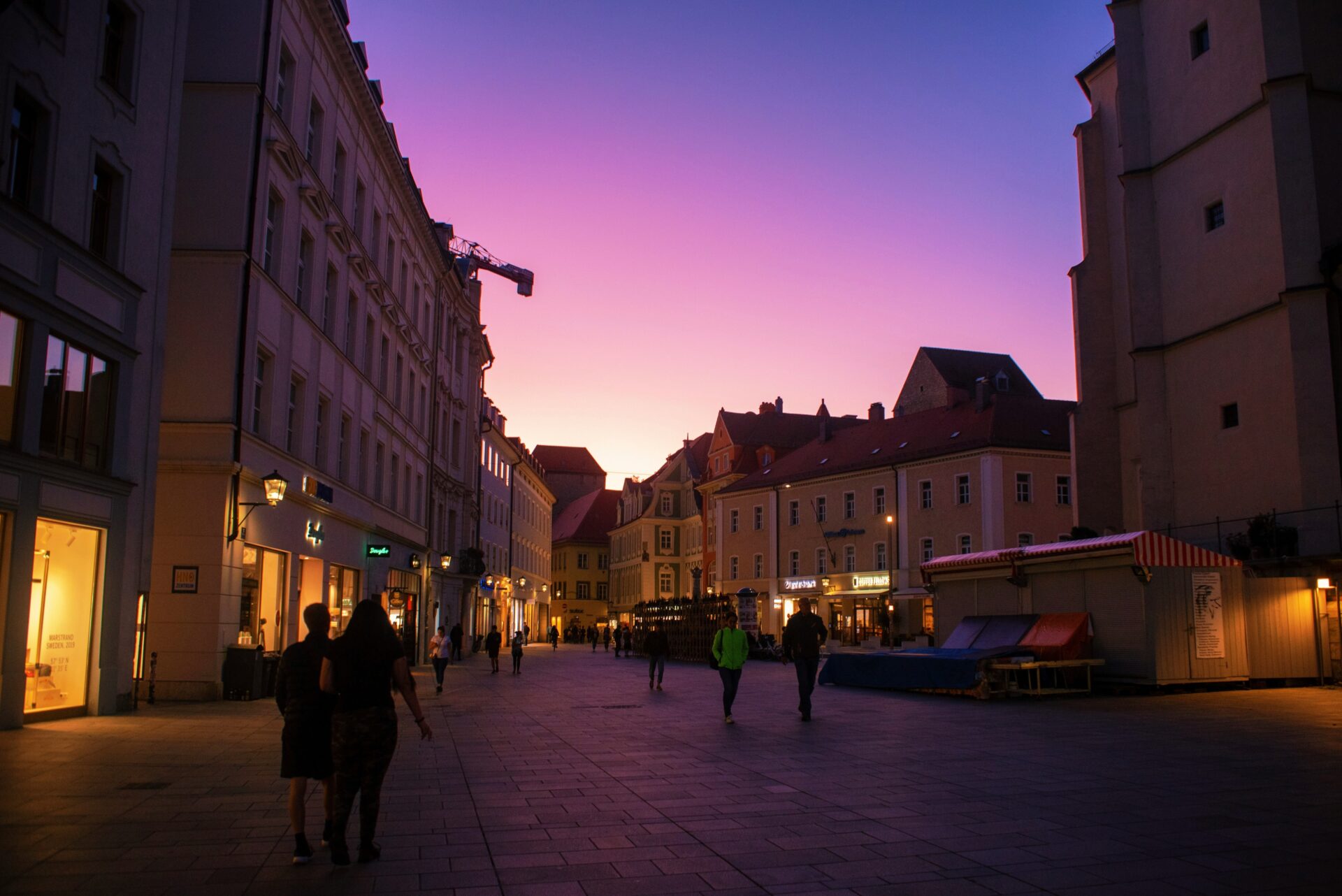
Why Regensburg’s UNESCO Old Town Captivated Me
Regensburg’s Old Town somehow feels ancient and alive at the same time. There’s so much history packed into every street.
Its medieval streets, protected by UNESCO, show off architecture and culture that really make it a must-see in Bavaria.
A Living Medieval City
Walking through Regensburg’s Old Town feels like time travel. The cobblestone lanes twist past medieval towers, painted facades, and houses that have seen centuries come and go.
The city sits on the Danube, and that river made it a medieval trade magnet. You still see that history everywhere—traders’ homes, merchant halls, and even old Roman walls poking out between shops and cafes.
I usually ditched the map and let curiosity lead me. The pedestrian-friendly streets encourage you to slow down and notice the little things: ornate door knockers, tiny statues above doors, or a café tucked beneath stone arches.
Locals bustle through their routines, kids laugh on quiet squares, and the smell of fresh bread drifts out from bakeries hidden in old corners. Some of my favorite moments came from just letting myself get a bit lost—turning a corner to find a sunlit chapel or stumbling into a cozy coffee spot where medieval stone meets soft chairs.
Living daily life here just blends old and new in a way that doesn’t feel forced.

UNESCO World Heritage Significance
UNESCO has protected Regensburg’s Old Town and Stadtamhof since 2006. This isn’t just about age—it’s about how well everything’s been kept up.
The city’s local laws have protected its historic buildings since the 1970s. That’s why the charm here feels so real.
Regensburg played a big part as a center of cultural exchange in Europe. Back in Roman times, they called it Castra Regina. It grew into a busy trade city, pulling in influences from all over the continent.
You can see those layers in the Gothic churches, Romanesque chapels, and Baroque houses jammed together along the lanes. For travelers, this means you’re not just looking at old stuff—you’re stepping into a place where the city planning and styles have survived almost untouched.
Spotting the UNESCO plaque or hearing about it at the visitor center makes you realize you’re part of something bigger. Every building feels like it’s got a story, waiting for someone to notice.
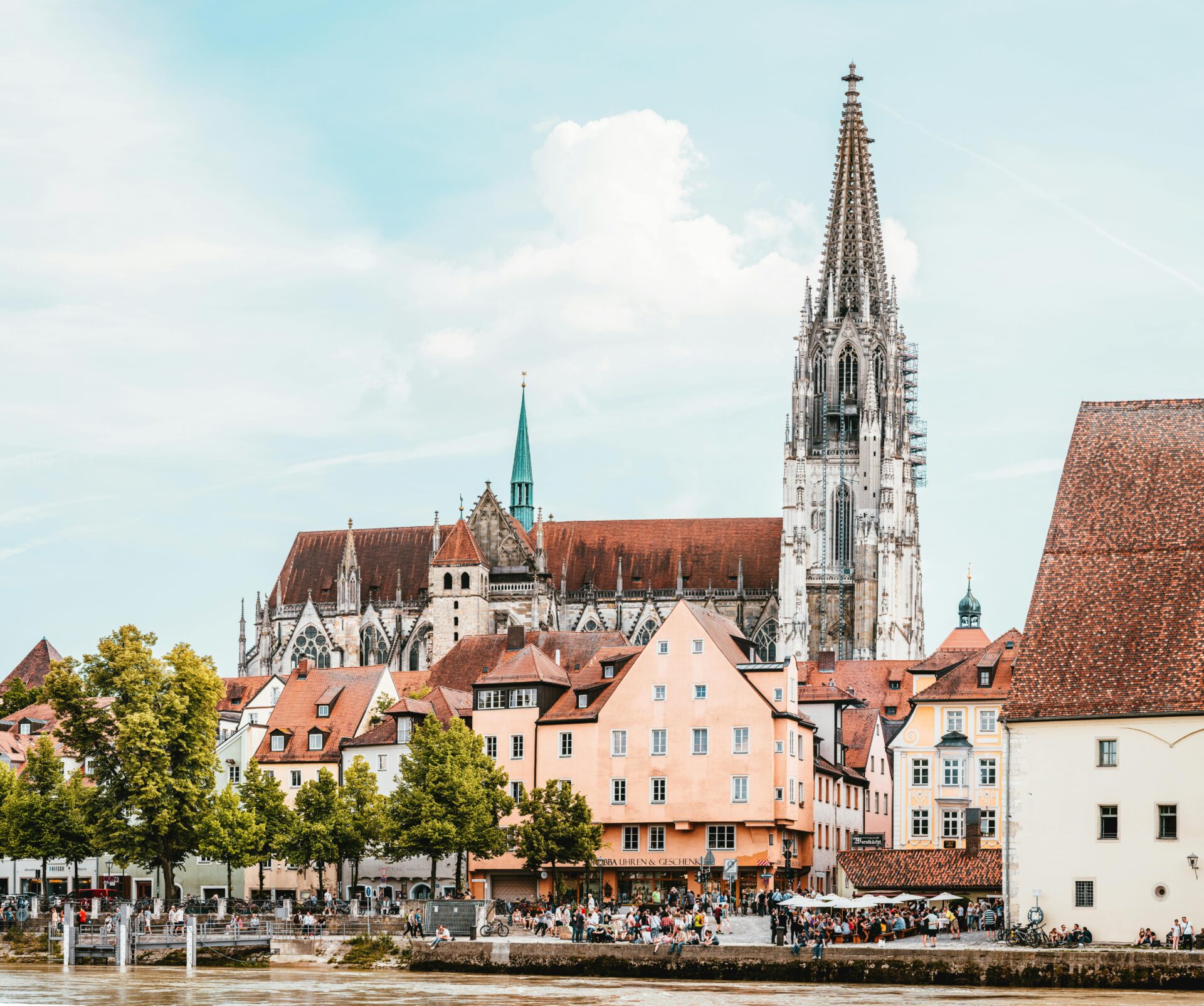
Wandering the Stone Bridge and Stadtamhof
The Stone Bridge in Regensburg isn’t just a way across the Danube—it’s a gateway into a neighborhood full of color, cobblestone, and river views. Stadtamhof sits just steps from the medieval core, mixing local charm with centuries of history.
Crossing the Iconic Old Stone Bridge
The Old Stone Bridge (Steinerne Brücke) stands as one of Germany’s oldest bridges. They built it in the 12th century, and it’s watched travelers come and go for centuries.
I loved crossing it—each step pulled me deeper into Regensburg’s story. The Danube stretches out on both sides, boats drifting underneath.
The views alone are reason enough to linger. You don’t need to rush. It’s free to cross, so there’s always a steady mix of locals and visitors wandering along.
One tip I can’t recommend enough: grab a bite at the Regensburg Sausage Kitchen right by the bridge. Their grilled sausages in crispy rolls are famous, and eating here feels like joining a tradition that’s lasted hundreds of years.

Charming Streets of Stadtamhof
Crossing into Stadtamhof, the vibe immediately shifted. The pace slowed, and the crowds faded away.
Narrow streets paved with old cobbles wind between bright houses. Cafes spill out onto the sidewalks, and everything feels a little more relaxed.
I liked ditching the map and just wandering. Stadtamhof has a local, lived-in feel that makes it easy to unwind.
Art galleries, bakeries, and a few quiet riverbank corners appeared around every bend. It’s definitely less touristy than the main Old Town, but honestly, just as pretty.
If you want a break during a busy day trip, this is the spot. Coming as a day trip from Munich? Stadtamhof is just across the bridge but feels completely different.
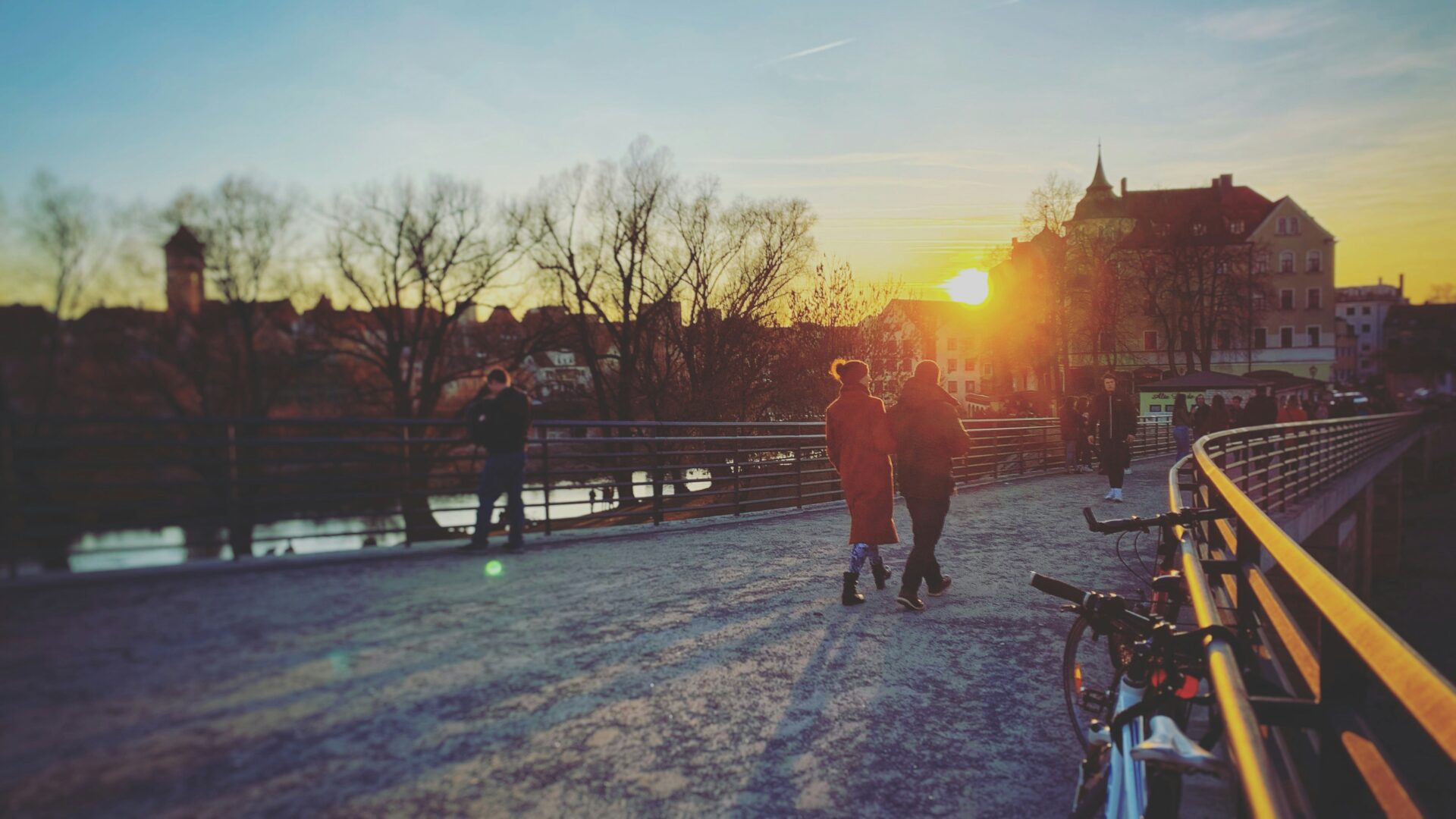
Views Over the Danube River
Looking over the Danube from either side of the Stone Bridge was a highlight. Early morning and late afternoon bring a special kind of peace, with the water catching the light just right.
You’ll spot riverboats and even kayakers drifting by. Benches along the riverside make perfect resting spots.
In warm weather, locals gather here in small groups or just sit alone, enjoying the breeze. I stopped often—sometimes to snap a photo, sometimes just to watch the sky change.
The view takes in both the historic city and quieter neighborhoods beyond. If you visit, bring your camera. The light over the Danube is something else, and the photo ops never seem to run out.
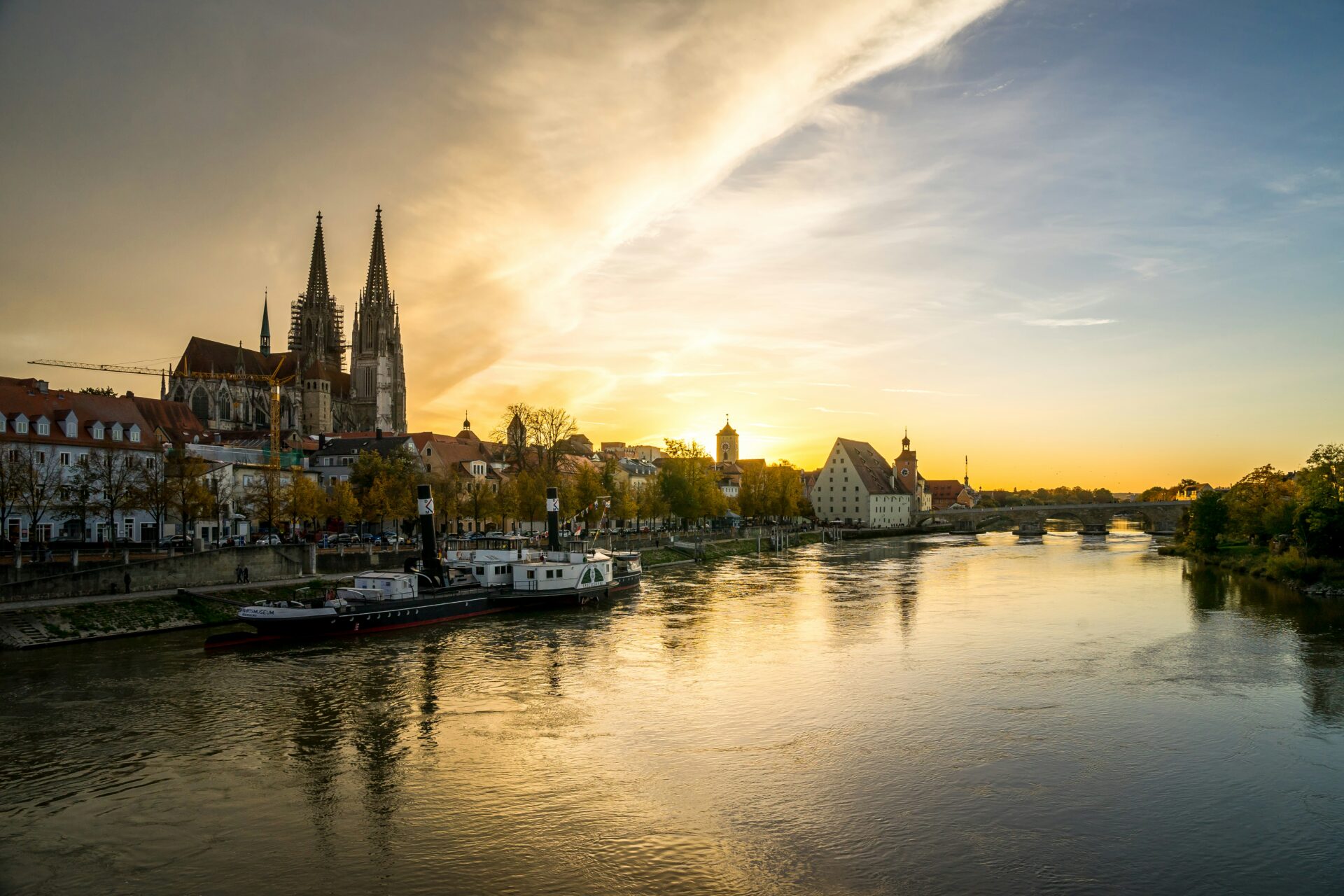
Exploring Haidplatz and Its Timeless Ambience
Standing in Haidplatz, I could feel history pressing in from every side. Medieval towers, bustling cafés, and centuries of culture all meet in this one spot in Regensburg’s UNESCO Old Town.
Medieval Squares and Patrician Towers
Haidplatz isn’t just a square—it’s a living piece of history. Its long, triangle shape goes back to when this was open land outside the old Roman fort.
Walking the stone pavement, I found myself surrounded by medieval architecture. Patrician towers—those tall, proud homes built by wealthy merchants—stand out with their old facades and quirky windows.
These towers once showed off the power of their owners. The famous ‘Zum Goldenen Kreuz’ (“Golden Cross”) looks more like a castle than a hotel and even hosted emperors and princes in the Middle Ages.
It’s a little surreal to imagine kings and diplomats walking across the same stones centuries ago. If you love history or architecture, there’s a ton to admire here.
Every building seems to whisper its own story. The whole square makes you feel like you’ve stepped back in time.
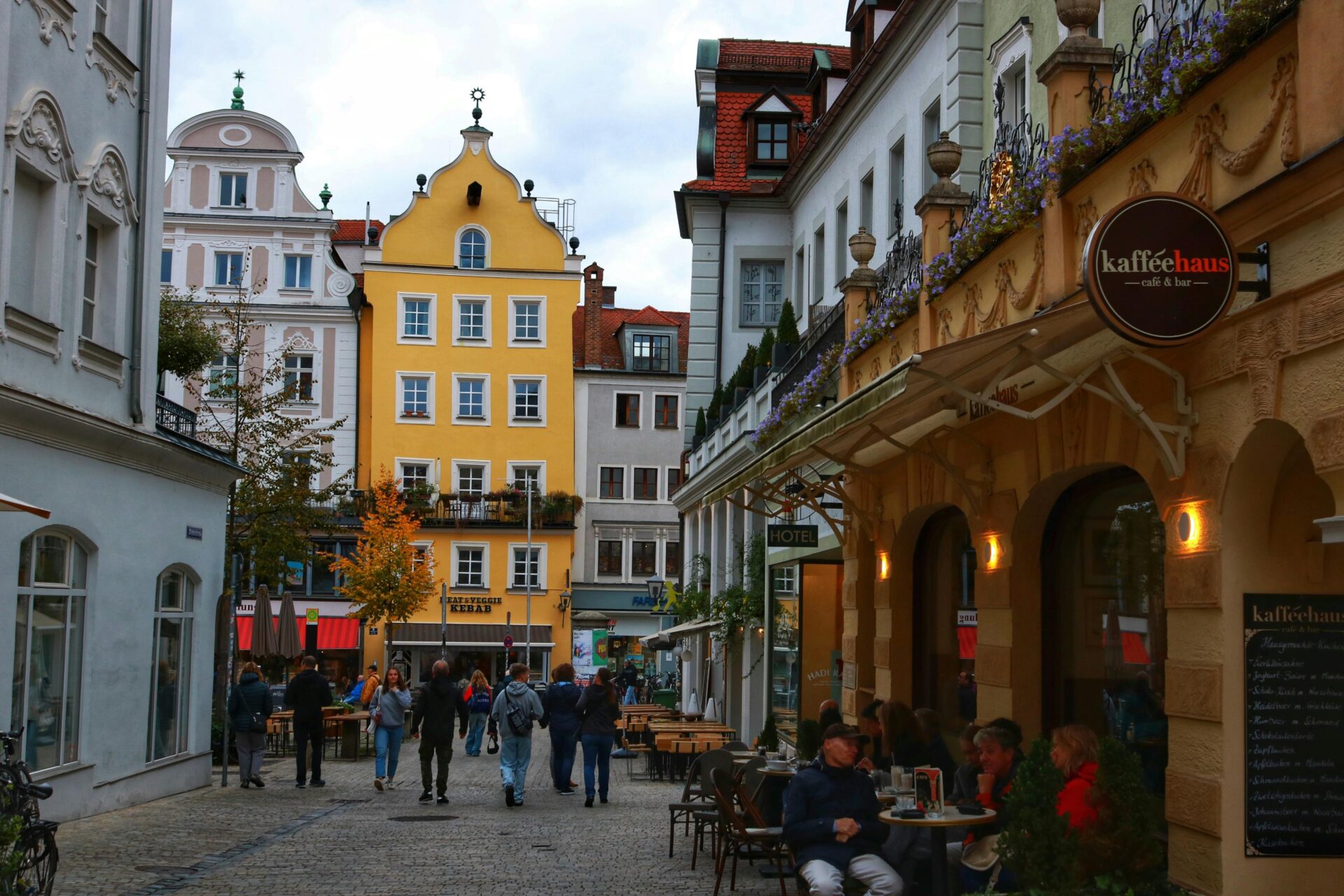
Cafés, Beer Gardens, and Bavarian Sausage
The heart of Haidplatz beats in its cafés and beer gardens. I’d often grab a seat at a small outdoor table just to soak up the energy and watch life go by.
The area is lined with cozy spots to try traditional Bavarian sausage (Weißwurst) with mustard and a pretzel. Ordering a cold drink under the shade of ancient stone buildings felt like the perfect way to pause.
The beer gardens always have a friendly, chatty vibe—locals catching up, tourists plotting their next adventure.
Tips:
- Try the local sausage: It’s best in the morning, mild and perfect with sweet mustard.
- Enjoy seasonal beers: Many beer gardens swap their taps depending on the season.
Sitting here, I felt plugged into Regensburg’s daily rhythm—good food, great people, and centuries of stories all around.
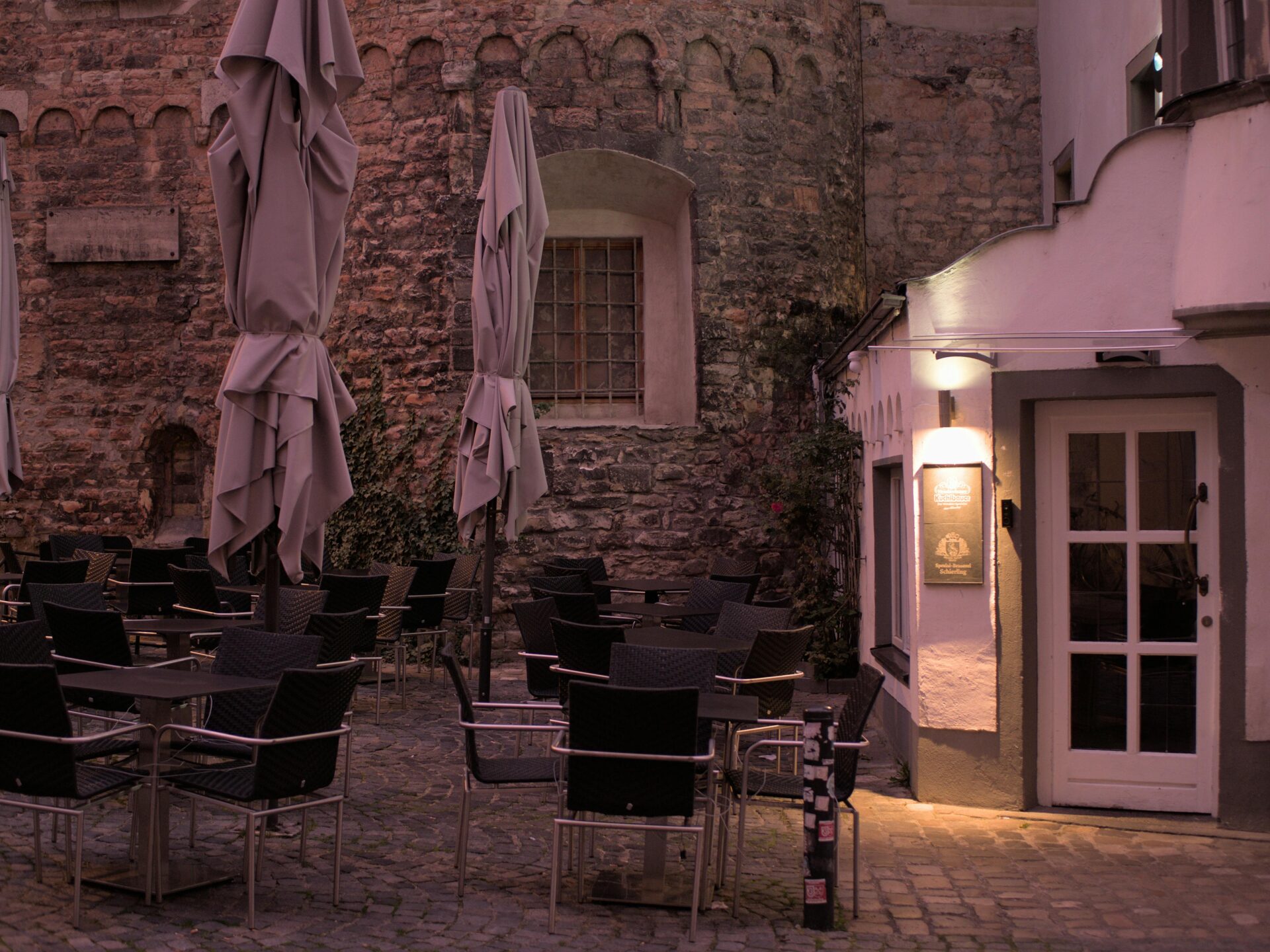
Discovering the Goliath House and Its Stories
Wandering deeper into Regensburg’s old town, I stumbled onto a piece of history that felt both grand and hidden away. Murals, ancient stonework, and twisting alleys create a secret world here.
The Legendary Goliath House Mural
When I reached the Goliath House, the enormous mural stopped me in my tracks. Painted across the stone façade, it shows the biblical battle between David and Goliath.
Seeing it in person, the scene really grabs you—David stands small but gutsy, while Goliath looms above. Locals say this mural has watched over Regensburg for centuries.
They built the house around 1230, and it looks a bit like a fortress—another reminder of the city’s medieval roots. The mural’s earthy reds and faded blues echo the city’s own colors.
It’s easy to miss these details if you’re rushing, so I’d say stop and look for a bit.
Quick Facts Table:
| Fact | Detail |
|---|---|
| Built | Circa 1230 |
| Mural Theme | David and Goliath (Biblical Story) |
| Style | Medieval “house castle” architecture |
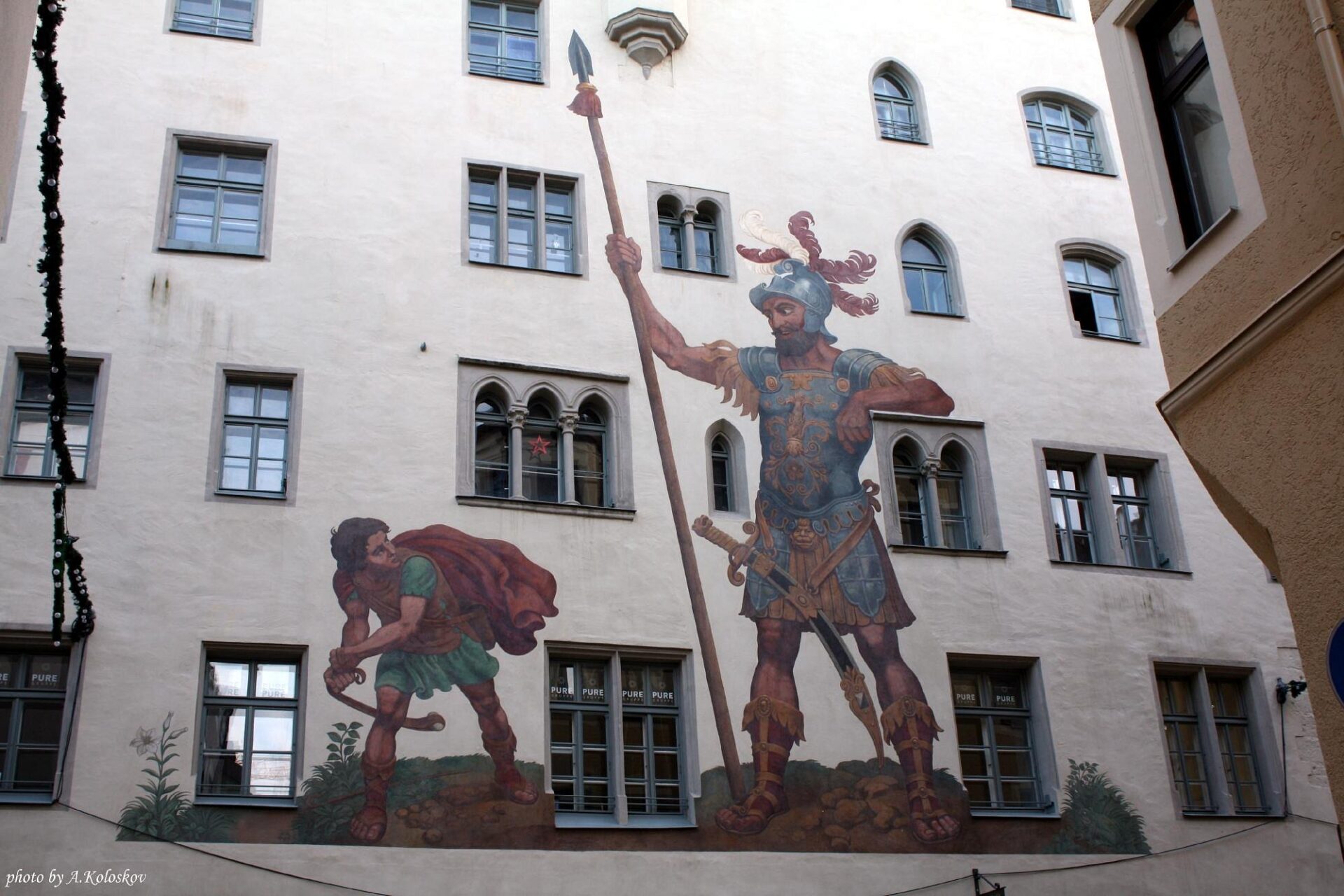
Cobblestone Streets and Secret Passages
Right next to the Goliath House, winding cobblestone lanes beg you to slow down. My shoes crunched satisfyingly as I explored.
These medieval streets aren’t just for show—they’re the city’s living veins. Some passages are so narrow, I felt like I’d slipped into another world, cut off from modern life.
Tiny plaques and hidden memorials peek out along the way. It’s like every stone could tell a story if you listened close enough.
There aren’t big signs pointing the way. I found the best surprises by just wandering—old doors carved with crests, quiet courtyards where locals chatted in the shade.
Walking here lets you sense how people moved and lived in the Middle Ages.
Travel Tip:
Bring comfortable shoes and a sense of adventure—you never know what you’ll find tucked behind the Goliath House’s winding lanes.
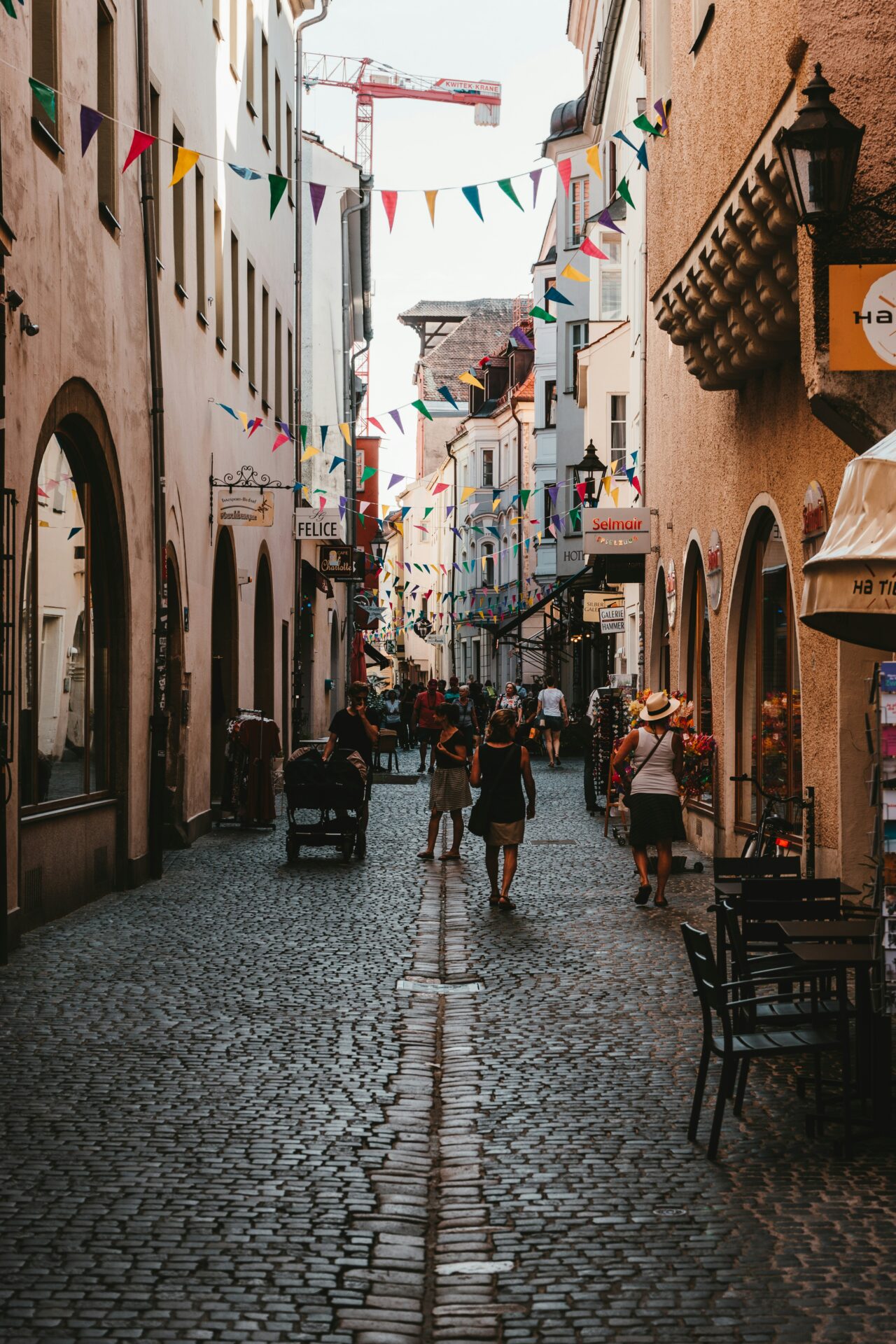
Hidden Marvels of Regensburg’s Old Town
Beneath Regensburg’s lively squares and peaceful corners, I found places packed with stories. Ancient walls and hidden museums reveal the city’s tangled past.
In these spots, history feels close—you can almost touch it, from Roman gates to somber memorials and joyful festive markets.
Porta Praetoria: Roman Fort History
Near the Cathedral, I almost missed the Porta Praetoria—a massive stone arch that blends right into the houses. The Romans built it around 179 AD, and it’s one of Germany’s oldest stone gates.
Standing underneath, I imagined Roman soldiers passing through thousands of years ago. The gate once formed part of a larger Roman fort that protected the city.
Regensburg keeps these ancient fragments alive, even as modern life buzzes by. Signs nearby explain the gate’s background, making it easier to picture what this frontier once looked like.
Stopping here added another layer to my walk and reminded me that Regensburg’s story reaches way back before the medieval days.
Quick Tip: Porta Praetoria is free to visit and sits right next to the Dom St. Peter. Don’t forget your camera!*
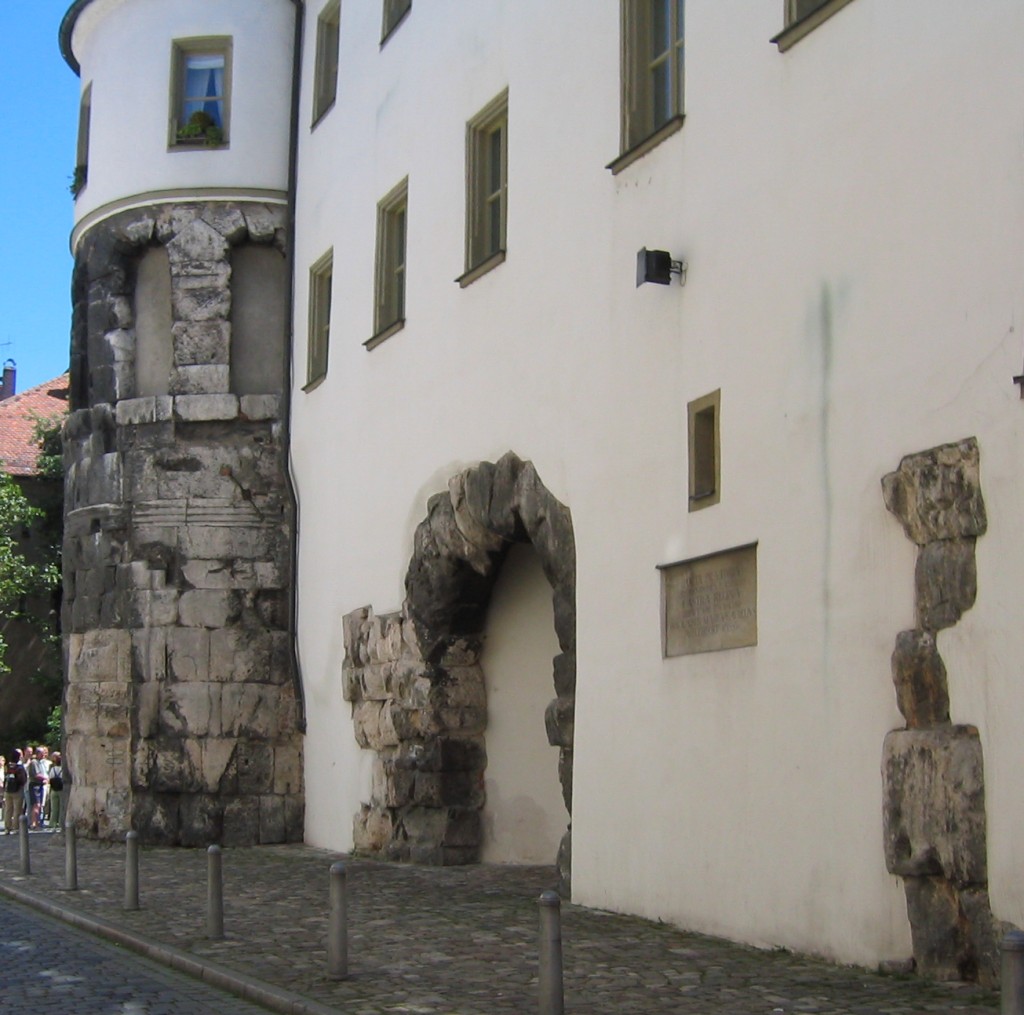
Neupfarrplatz and the Jewish Community
Neupfarrplatz grabbed my attention for more than just its cafés. I couldn’t help but wonder about all the history this square has soaked up over the centuries.
Back in medieval times, Regensburg’s Jewish community made this place their home. You can still spot traces of the old Jewish quarter here, especially where the synagogue once stood before its destruction in the 16th century.
Now, a clever memorial marks the lost community—white stone lines on the ground show where buildings used to be. I saw people stop and take it in; there’s a quiet power in the space that’s hard to ignore.
You can head underground to the Document Neupfarrplatz museum. They let you explore old cellars and foundations that came to light during excavations.
Learning about Regensburg’s Jewish history added a whole new layer to my visit. Suddenly, this pretty square felt like a place for reflection.
Neupfarrplatz Memorial Features:
| Feature | Description |
|---|---|
| Stone Outlines | Show original Jewish buildings |
| Underground Museum | Jewish relics and medieval structures |
| Plaques | Details the community and historic events |
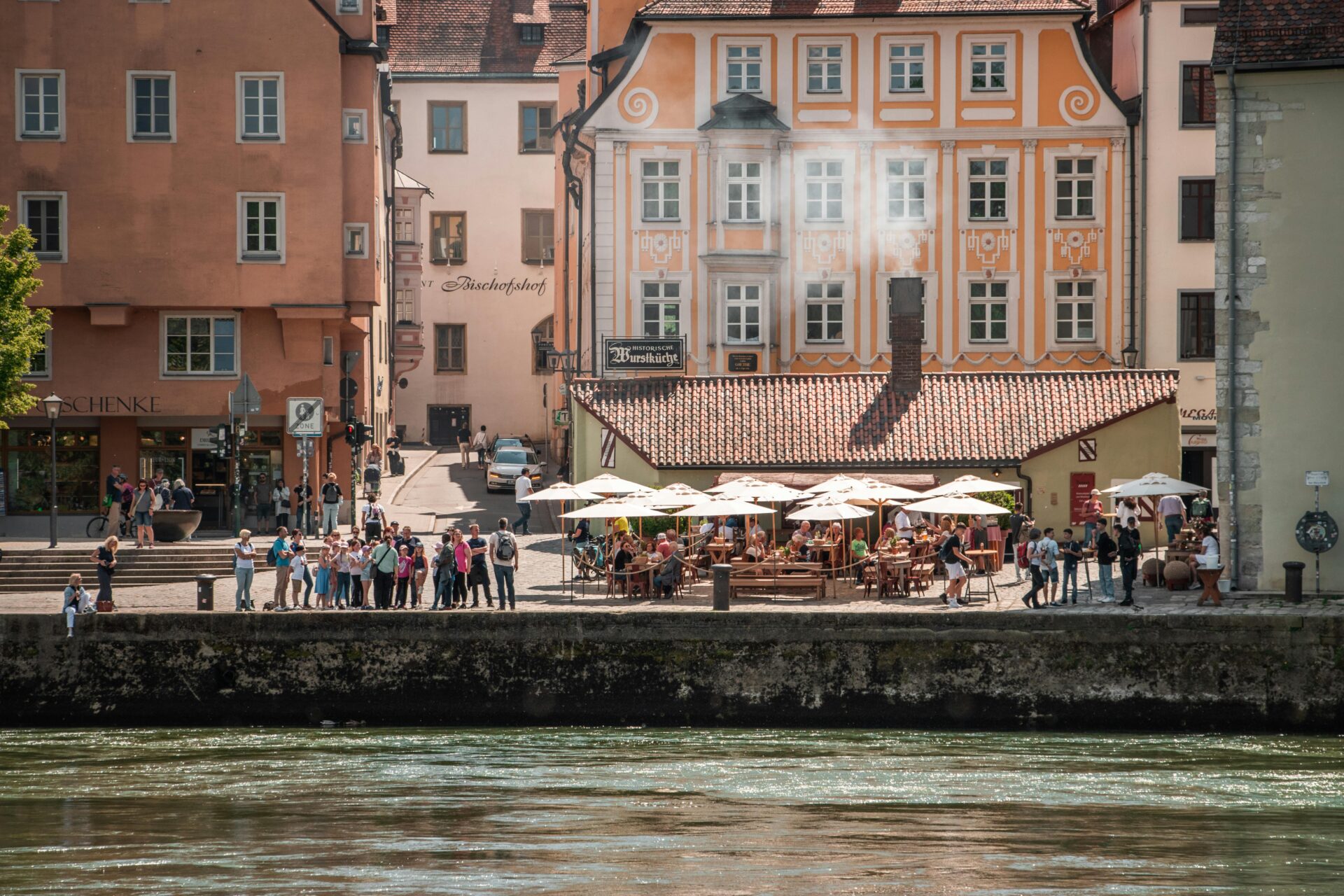
Quirky Museums and the Torture Chamber
I wandered into a few quirky museums tucked along quiet side streets. The Historisches Museum covers Regensburg’s journey, showing off Roman armor and medieval art.
Kids and adults get to mess around with hands-on exhibits, which honestly makes history feel way less stuffy.
One spot I can’t shake from my mind is the tiny dungeon, known as “the torture chamber.” You’ll find it deep beneath the Altes Rathaus (Old Town Hall). Prisoners once waited here for their trials, and walking through it was both chilling and fascinating.
Stark stone walls, iron chains, and official-looking papers set the mood. Guided tours of the Old Town Hall lead you through these prison rooms and share stories about crime and punishment in old Regensburg.
If you’re curious (and not too squeamish), you’ve got to check it out.
Note: Old Town Hall tours fill up fast—definitely check the schedule ahead of time!
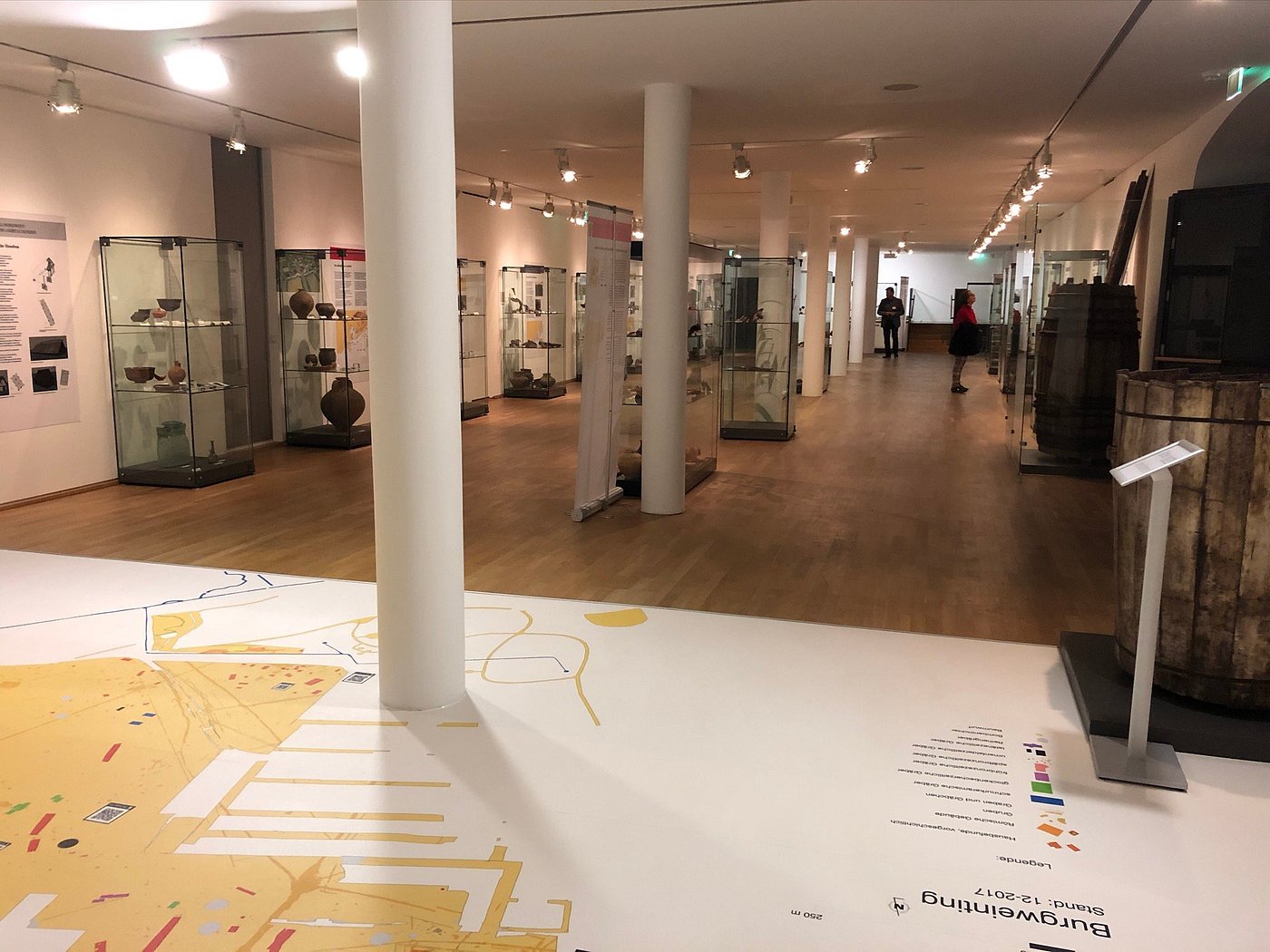
Christmas Markets and Festive Surprises
When December hits, Regensburg’s Old Town turns downright magical. The Christmas markets open up, and suddenly the air smells like mulled wine and roasted nuts.
Every corner feels like a little surprise. My favorite market sits right at Neupfarrplatz.
Wooden stalls line up, selling everything from handmade ornaments to gingerbread. Local choirs sometimes sing, and it just adds to the whole festive feeling.
You’ll find smaller markets popping up near the Thurn and Taxis Palace and in tucked-away courtyards. These spots feel quieter and a bit more intimate.
Beyond the shopping, I loved chatting with locals, warming my hands by open fires, and watching families soak up the holiday magic. If you’re around in winter, the markets breathe life into the old town in a way that’s both timeless and super welcoming.
Christmas Market Highlights:
- Neupfarrplatz: Central, lively, tons of food.
- Thurn and Taxis Palace: Romantic, small entrance fee, live music.
- Handmade gifts: Candles, wooden toys, ornaments.
- Warm treats: Glühwein, sausages, traditional sweets.
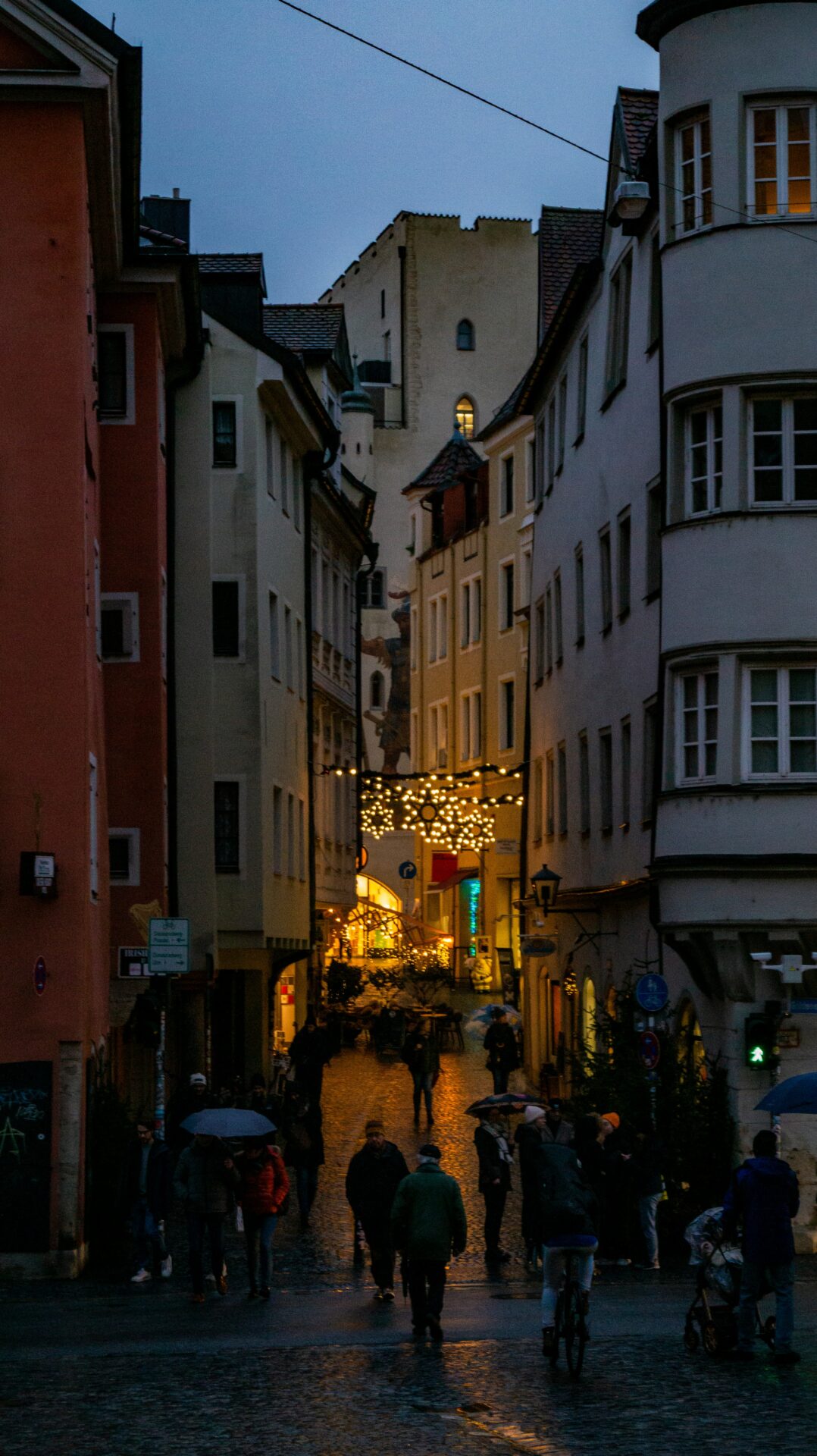
Regensburg’s Majestic Landmarks You Can’t Miss
Walking through Regensburg, I felt surrounded by history at every turn. Towering cathedrals, grand halls, and palaces seemed straight out of a fairytale.
Each site didn’t just show me the city’s past—they made every step in the Old Town feel special.
Regensburg Cathedral: A Gothic Masterpiece
St. Peter’s Cathedral rises right in the heart of Regensburg. As soon as I spotted those twin spires, I just stood there, honestly a bit awestruck by the height and the detail in every inch of the stonework.
This cathedral dates back to the 13th century and stands as one of southern Germany’s most important Gothic architecture treasures.
Inside, sunlight pours through colorful stained glass, painting the space in shifting hues. Stone columns and vaulted ceilings soar overhead.
I spotted beautifully carved statues of saints, and the organ music floating through the air only added to the atmosphere. There’s something mysterious and reverent about the whole place.
Tips for visitors
- You can usually enter the main cathedral for free.
- Don’t miss the “Smiling Angel” statue—it’s a favorite for a reason.
- Quiet reflection is welcomed, so keep voices down.
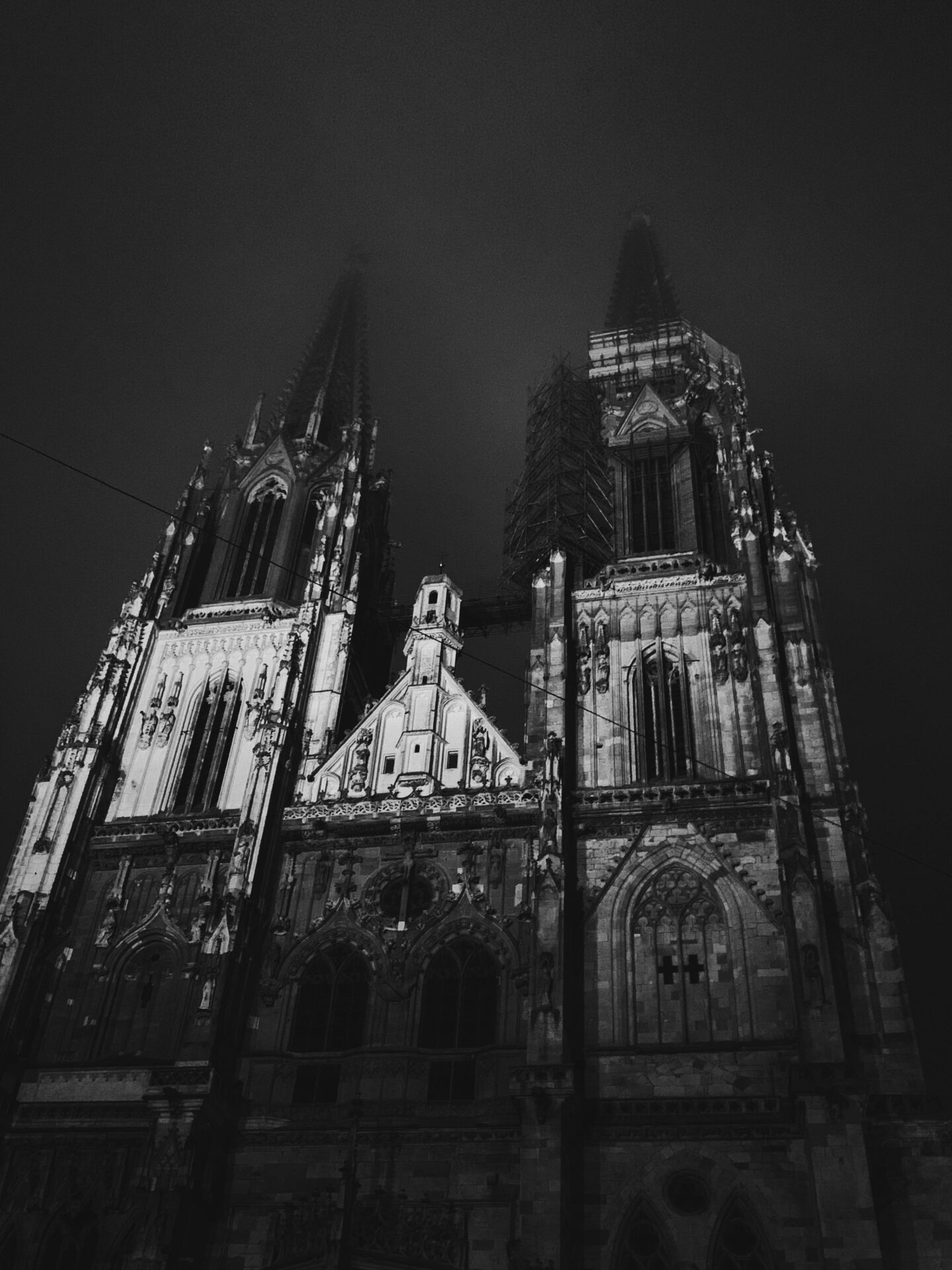
The Grand Old Town Hall
Just a short stroll away, the Old Town Hall reminds you of Regensburg’s days as a Free Imperial City. This building isn’t just a pretty face—it’s where some of German history’s biggest decisions happened.
The Imperial Diet met here, hashing out politics and passing laws for the Holy Roman Empire. I joined a guided tour and ended up deep in the old torture chamber and medieval courtroom.
It felt a little eerie, but definitely memorable. The building itself blends Gothic and Renaissance styles, from thick stone walls to colorful murals in the council chambers.
What I found most practical:
- English tours run daily.
- Some rooms get chilly, so a light jacket’s a good idea.
- The Town Hall square is a fun spot to catch local street performers.

Schloss Thurn und Taxis: Royal Splendor
Schloss Thurn und Taxis honestly made me feel like I’d stumbled into a royal movie set. They built this palace right on top of an old monastery, and it eventually became home to the princely Thurn und Taxis family.
These folks had a huge impact on European postal history. Their wealth? You can spot it everywhere, in every lavish corner and gilded detail.
I joined a guided palace tour and got to peek inside rooms packed with antique furniture. Gigantic chandeliers hung from the ceilings, and elaborate tapestries lined the walls.
When I wandered through the rose gardens, I couldn’t help but imagine the nobility’s daily life. Maybe they hosted fancy balls or welcomed guests arriving in those ornate carriages.
What not to miss:
- The carriage museum, where you’ll find historic postal coaches.
- Café Schloss, a cozy spot to grab coffee after all that sightseeing.
- The special Christmas markets in winter—they really light up the palace grounds.

